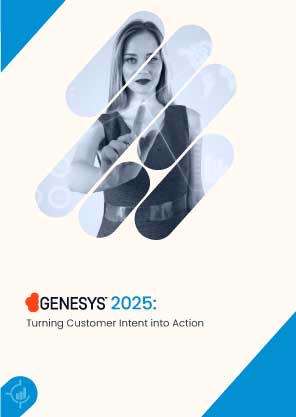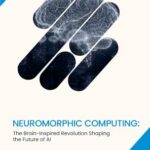or call: +1 (845) 347-8894

or call: +1 (845) 347-8894

In an era where customer expectations are higher than ever, simply reacting to inquiries is no longer enough. The winners in experience-driven markets are those who anticipate what a customer wants before they ask, then orchestrate seamless, outcome-focused interactions across channels.
With the upcoming Genesys webinar setting the stage, the company is positioning its platform not just for automation but for intent-driven action, turning what a customer means into what they experience.
This article explores how Genesys is enabling organizations to decode customer intent, leverage it with AI, and orchestrate actions that drive loyalty, efficiency, and business value.
Customer intent, the underlying goal or purpose behind a customer’s behavior, has moved to a critical operational lever. As the company points out, behaviors such as clicks, scrolls, and page views aren’t just noise; they’re signals.
For example:
This means companies must do more than just respond: they must understand intent and deliver the relevant experience in the right moment.
Genesys is addressing this challenge through its cloud platform, which integrates key capabilities to move intent from insight to action:
Furthermore, business performance data backs this up:
These combine to show that Genesys isn’t just talking about intent; it’s delivering infrastructure to turn intent into business outcomes.
Let’s break down the journey into three core phases:
Using behavioral signals (e.g., website navigation, chat messages, call context), the platform identifies customer intent. For example, a visitor who clicks pricing, reads feature comparisons, and then opens a chat may have the intent to “evaluate subscription upgrade.” Genesys’s predictive engagement engine handles this.
Once detected, the system contextualizes the intent, evaluating channel, customer history, sentiment, and journey stage, and assigns the next-best action. For instance, a high-value customer on mobile might be routed to a senior agent with an offer ready.
The platform triggers the appropriate workflow: engagement with a chatbot or agent, proactive outreach, dynamic routing, and personalized offers or content. Through its EDP and Cloud AI features, Genesys enables this across channels and back-office systems.
One customer using Genesys Cloud AI reported a 15% reduction in handle time and a 29% increase in queries resolved without agent handoff. Another organization saw a 68% increase in sales conversion after improving the chat acceptance rate by 10 points, a clear example of intent detection leading to revenue.
In today’s experience economy, several forces are pushing businesses in this direction:
Thus, moving from simple reactive service to proactive, intent-based orchestration isn’t optional; it’s a differentiator.
To successfully turn customer intent into action, organizations must address several areas:
As Genesys and the broader industry push into the next phase of AI-driven CX, several trends are notable:
For companies committed to delivering differentiated customer experiences, the imperative is clear: move from simply supporting interactions to orchestrating outcomes, and that means turning customer intent into action. With the Genesys 2025 event and its expanded platform capabilities, the opportunity is now.
Whether your goal is higher conversion, faster resolution, or deeper loyalty, the pathway is through intent-driven, AI-powered orchestration. Organizations that can detect intent early, contextualize it intelligently, and act seamlessly across channels will win in the experience economy.
As you plan your CX strategy for the year ahead, ask yourself: Are you waiting for customer signals, or are you triggering the right action when you detect them? With Genesys’s platform in your toolkit, the latter is increasingly within reach.
Genesys 2025 focuses on AI-powered customer experience orchestration, helping organizations decode customer intent and act on it in real time. The event spotlights how AI, data, and automation combine to deliver measurable outcomes across industries.
Genesys uses its Cloud AI Experience Platform, Predictive Engagement, and Event Data Platform (EDP) to analyze behavior signals, interpret intent, and trigger proactive engagement, routing customers to the right agent or automating next steps seamlessly.
Customers expect personalization at every step. Intent-driven CX allows brands to understand why customers engage, not just how. This leads to faster resolutions, higher satisfaction, and improved retention, all while reducing operational costs.
Enterprises using Genesys AI saw up to 15% lower handle time and 29% more queries resolved. They have also seen up to 68% higher sales conversion rates after implementing predictive engagement strategies.
Businesses should invest in data quality, AI governance, and cross-team orchestration tools. Adopting platforms like Genesys Cloud AI Studio enables even non-technical teams to design and deploy intent-aware experiences responsibly and efficiently.
To participate in our interviews, please write to our IntentTech Media Room at info@intentamplify.com




